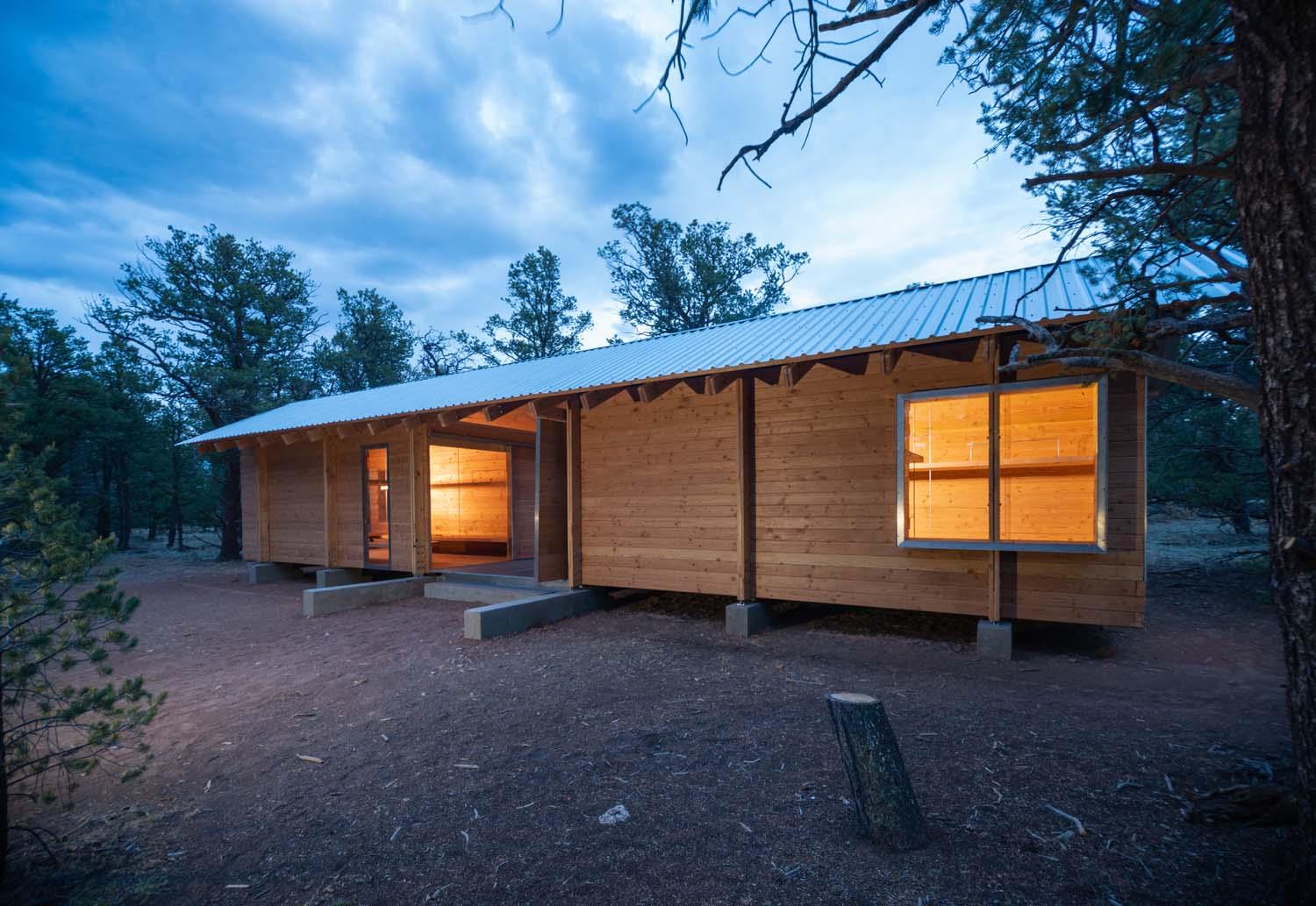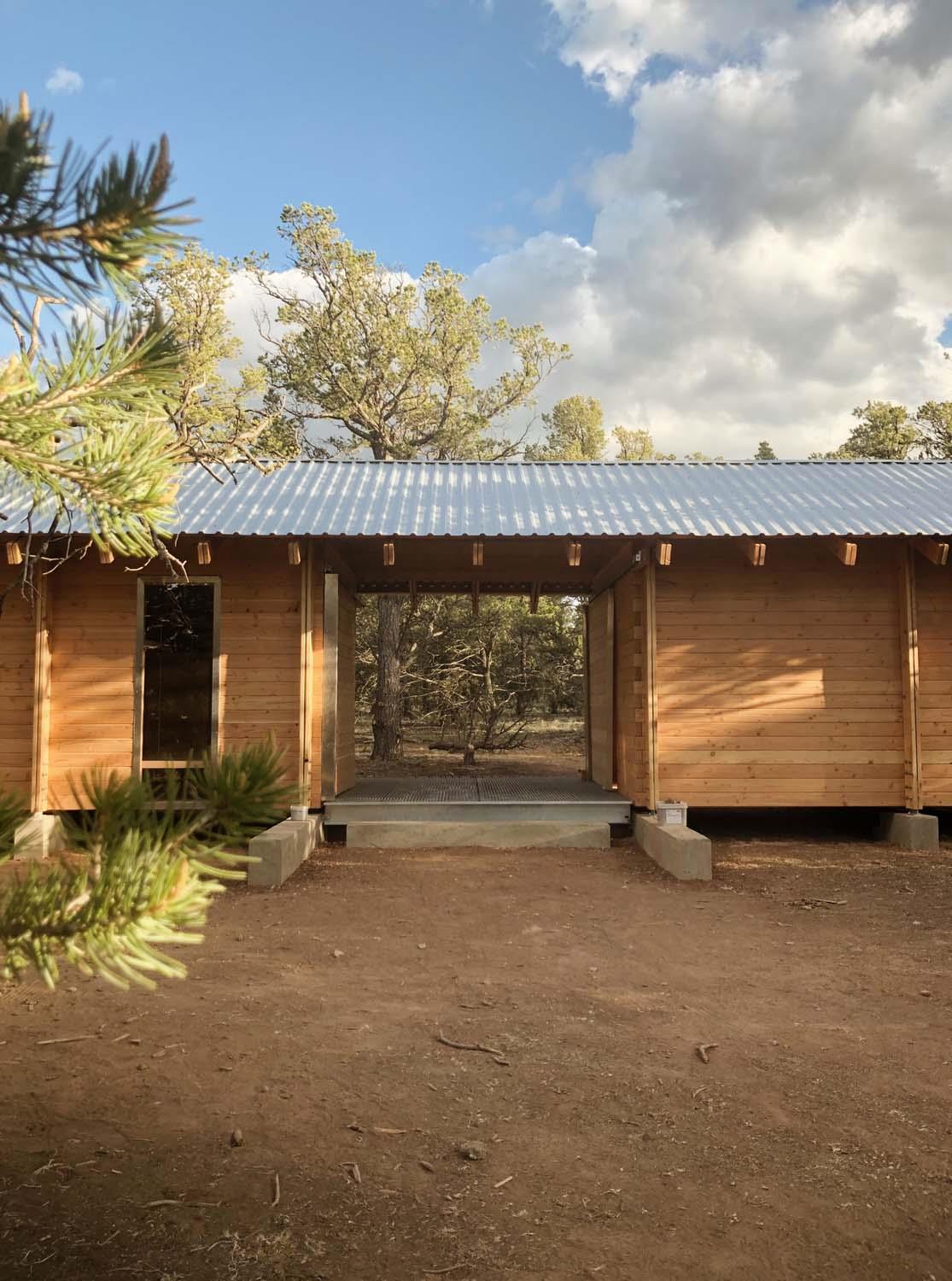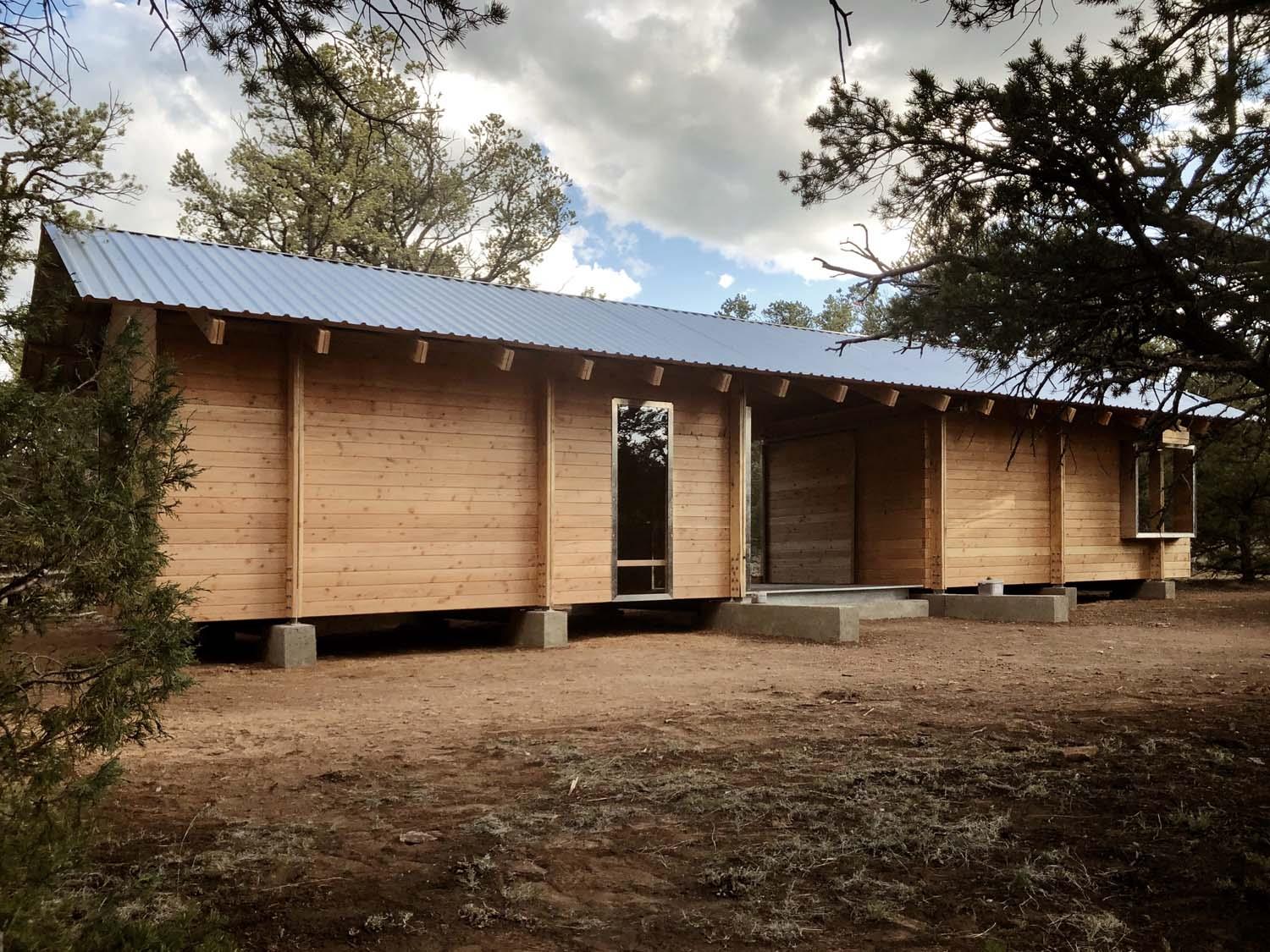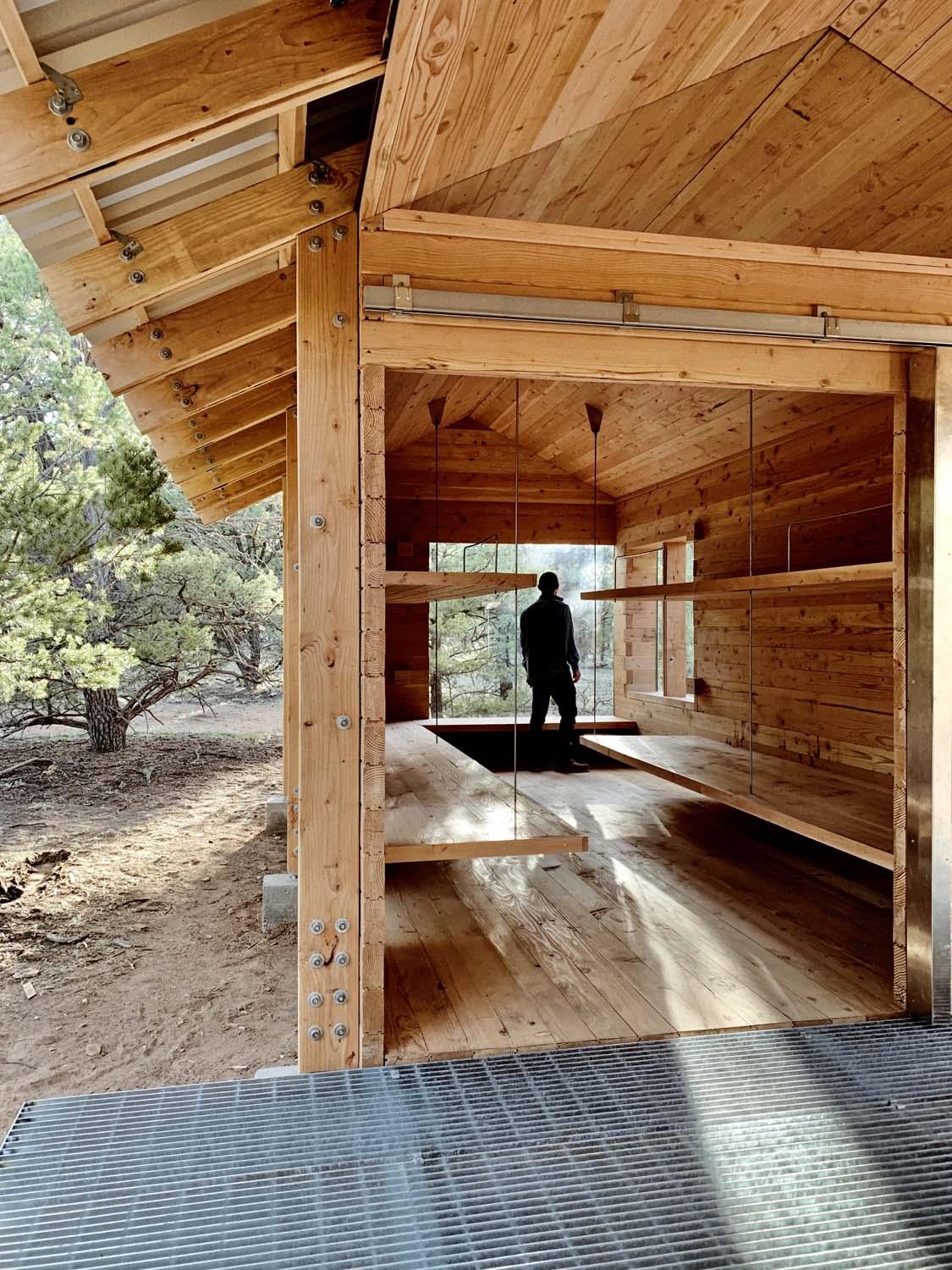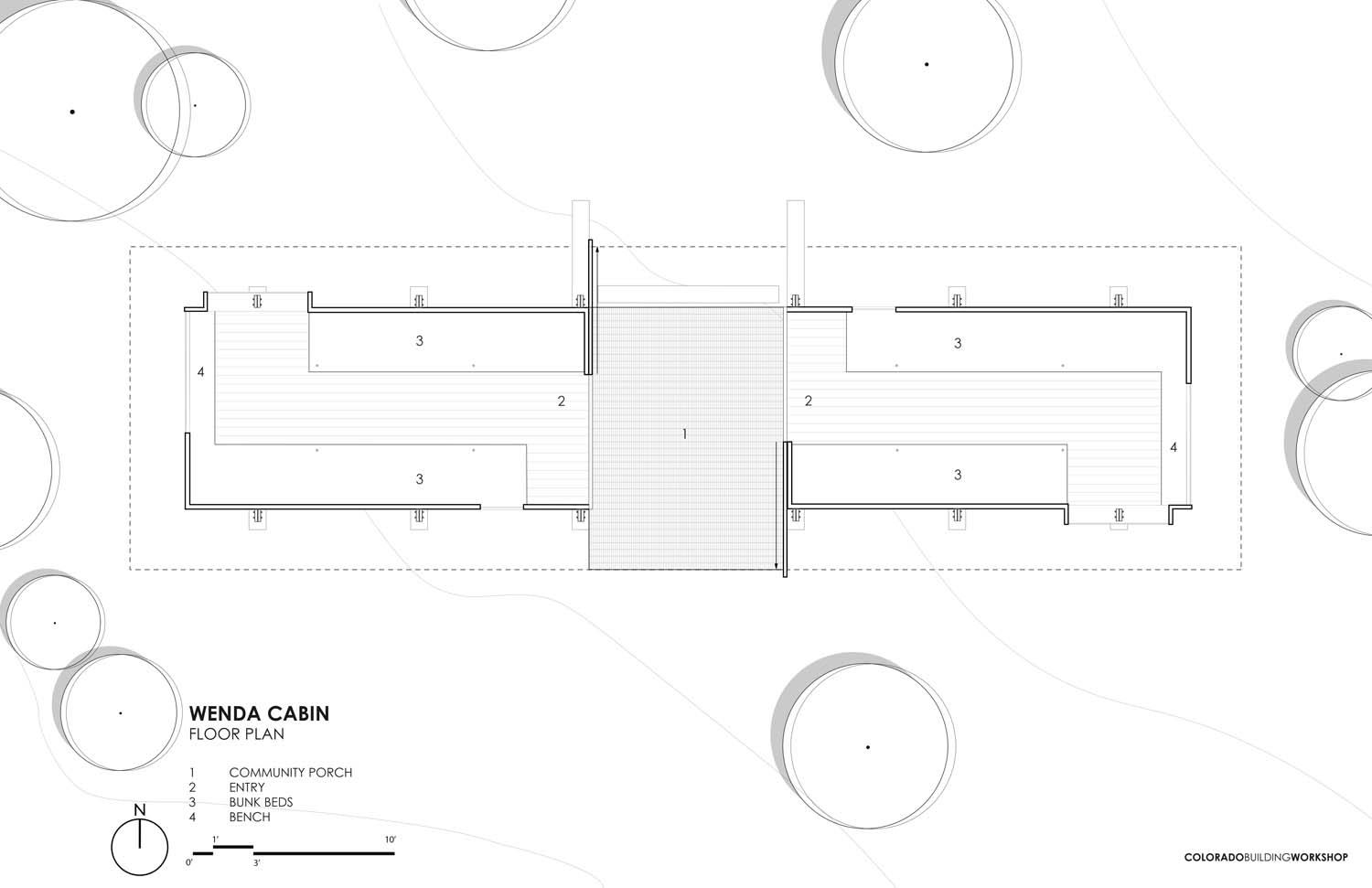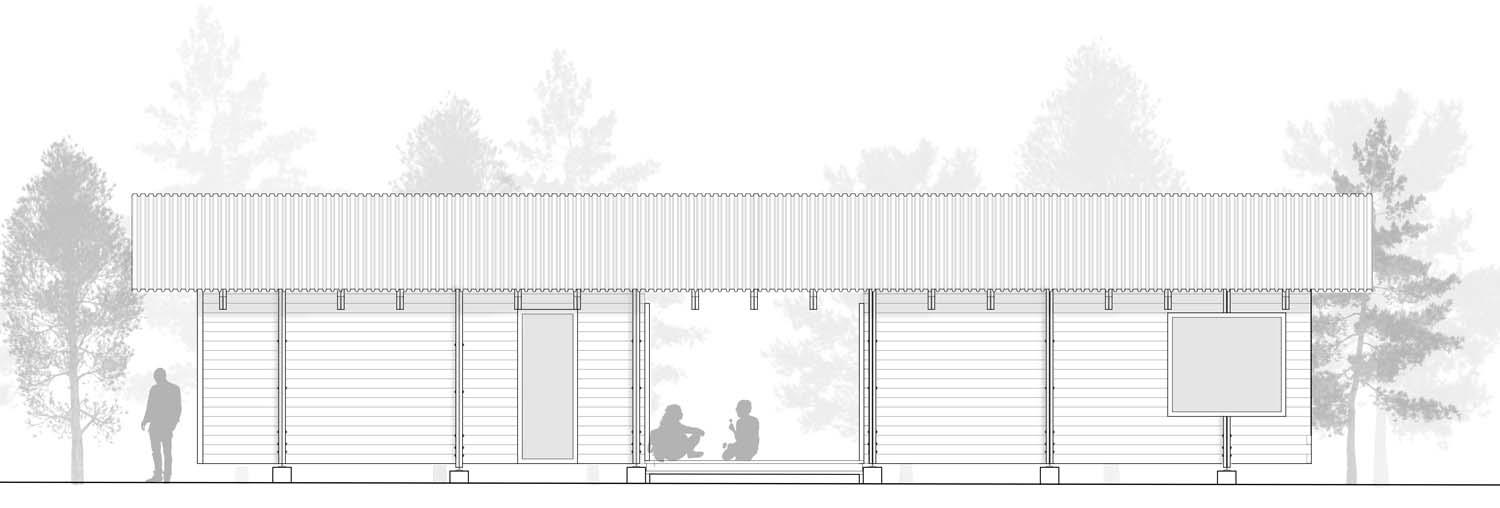COTTONWOOD CABINS | 2019
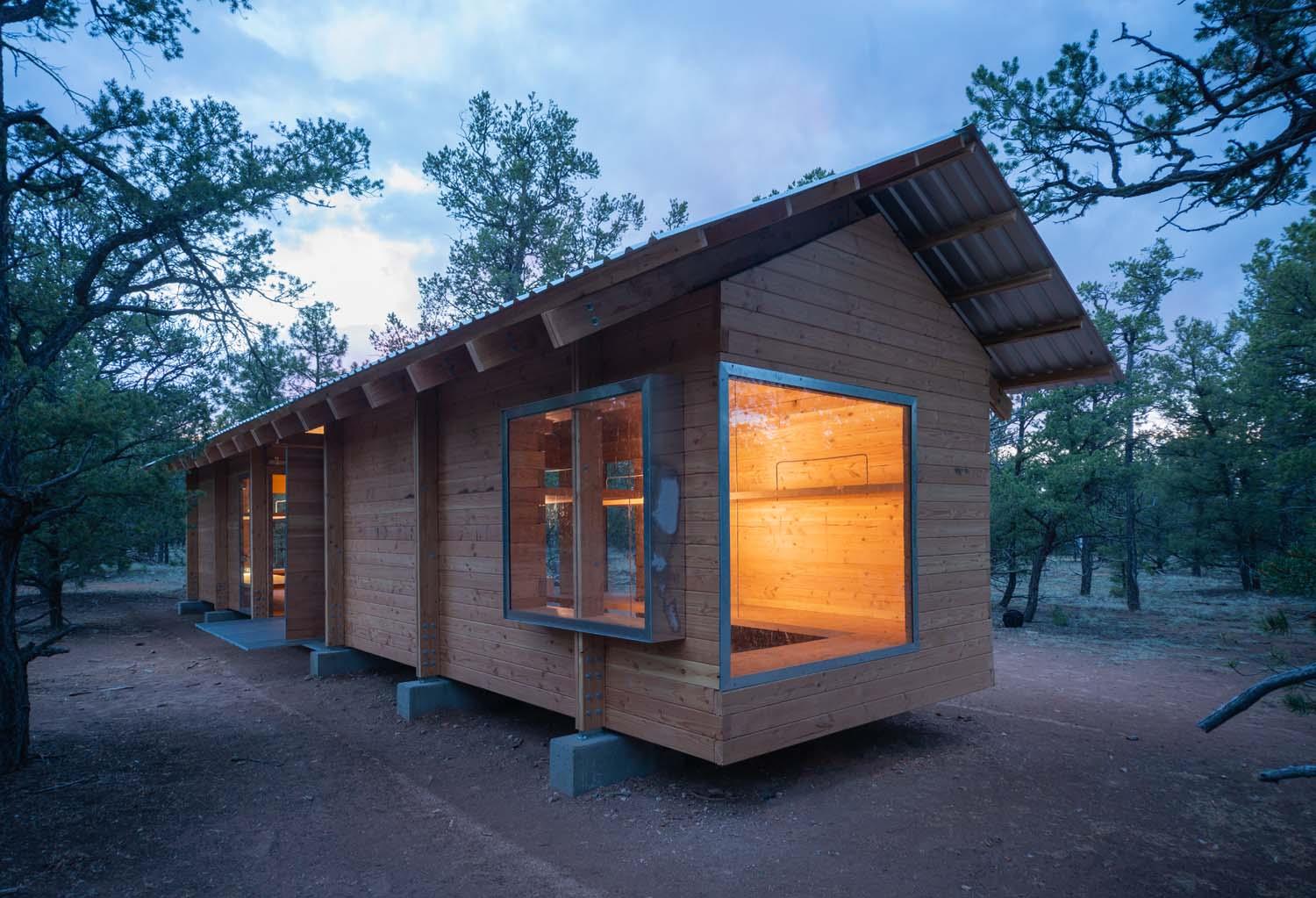
High on the Colorado Plateau just outside of Thoreau, New Mexico in a desert landscape characterized by Juniper and Ponderosa Pine forests, six new bunkhouses, and an outdoor kitchen create a welcome refuge for trekkers at the basecamp for Cottonwood Gulch Expeditions. The objective: to foster a sense of community while reinterpreting the place-based local vernacular which is rooted in the landscape. The earliest set of cabins, designed by Kurt Vonnegut Sr., architect-father of the renowned writer, are open-air structures with retractable canvas flaps used to cover the window openings. Drawing on the camp’s rich “porch culture,” the new cabins are conceived as pairs of 200 sq ft bunkhouses that share a singular roof over a common outdoor gathering space. Each cabin seeks strong connections to nature using apertures to maximize the experience of the outdoor environment. The doors, conceived of as movable walls are mounted on sliding tracks, that when opened connect each bunkhouse to a shared porch. Large glazing areas allow the interior to be flooded by the morning light and provide occupiable moments to contemplate the world outside.
The cabins are elevated above the landscape to give a degree of separation from the fauna of the high desert. On the interior, bunks float above the floor, suspended from the ceiling by steel rods. This removes all interior vertical surfaces and provides clear sightlines into corners, leaving no space for rodents to hide or nest. Floating exterior porches are constructed of bar grate to make them visually transparent and facilitate the catch and relocation of rattlesnakes.
Each cabin’s bunk beds are designed to offer trekkers campers agency on how they occupy the space. Traditional rigid bunk beds are replaced with floating platforms designed with more space than required for a single mattress. This gives each trekker the ability to choose whether they engage a window, find an introspective moment of solitude, sleep close to a friend, utilize negative space for benches, or find their own creative way to make the cabin their own.
The cabin’s construction is an investigation into mass-timber building techniques. Screw-laminated 3 by 6-inch tongue and groove fir timbers are used to achieve solid floors, walls, and ceilings. The screw laminated timbers act as a single diaphragm, achieving greater spans and cantilevers than individual pieces of lumber could alone. This construction method allows for various self-supporting assemblies without the need for additional framing. Traditional headers over doors and windows are no longer required as the timbers work to carry the loads. This structural assembly is also utilized in the fabrication of the doors, window bucks, and post-tensioned floating bunk beds.
2019 AIA Western Mountain Region Honorable Mention Award
2019 YIP Built Environment Award
Kristina Artyushkevich
Filimon Alvarez
David Burton
Aria Dellepiane
Stephen Edwards
Tamrat Getu
Genevieve Hampton
Mike Hackett
Andrew Hubbard
Kasey King
Kristin King
Clark LaMotte
Jessica Luchak
Angie Markous
Katherine McGonigle
Emiliano Morales
Michelle Ropson
Pekko Sangi
Juaquine Silveira
Reme Shipley
Malgorzata Tomasik
Cody VanHolland
Sarah Vanderpool
Jesse Wilcoxen
Lenora Woodcock
Morgan Young
Lorraine Ziegler
Filimon Alvarez
David Burton
Aria Dellepiane
Stephen Edwards
Tamrat Getu
Genevieve Hampton
Mike Hackett
Andrew Hubbard
Kasey King
Kristin King
Clark LaMotte
Jessica Luchak
Angie Markous
Katherine McGonigle
Emiliano Morales
Michelle Ropson
Pekko Sangi
Juaquine Silveira
Reme Shipley
Malgorzata Tomasik
Cody VanHolland
Sarah Vanderpool
Jesse Wilcoxen
Lenora Woodcock
Morgan Young
Lorraine Ziegler
Faculty:
Rick Sommerfeld
William Koning
Andy Paddock, PE
JD Signom
Staff:
Kate Hartung
DenCol
DuPont Tyvek
Glass Systems
Kiewit
Marx | Okubo
Rocky Mountain Joinery
Simpson Strong-Tie
Sterling Lumber Company
DuPont Tyvek
Glass Systems
Kiewit
Marx | Okubo
Rocky Mountain Joinery
Simpson Strong-Tie
Sterling Lumber Company
